If you want a tender, juicy cut of beef this easy Ribeye Roast recipe is the answer. Roasted with butter and herbs, this gourmet entree is perfect for holidays and special occasions.
Looking for another delicious main course? Try my Smothered Turkey Wings and Spiral Cut Ham recipe next.
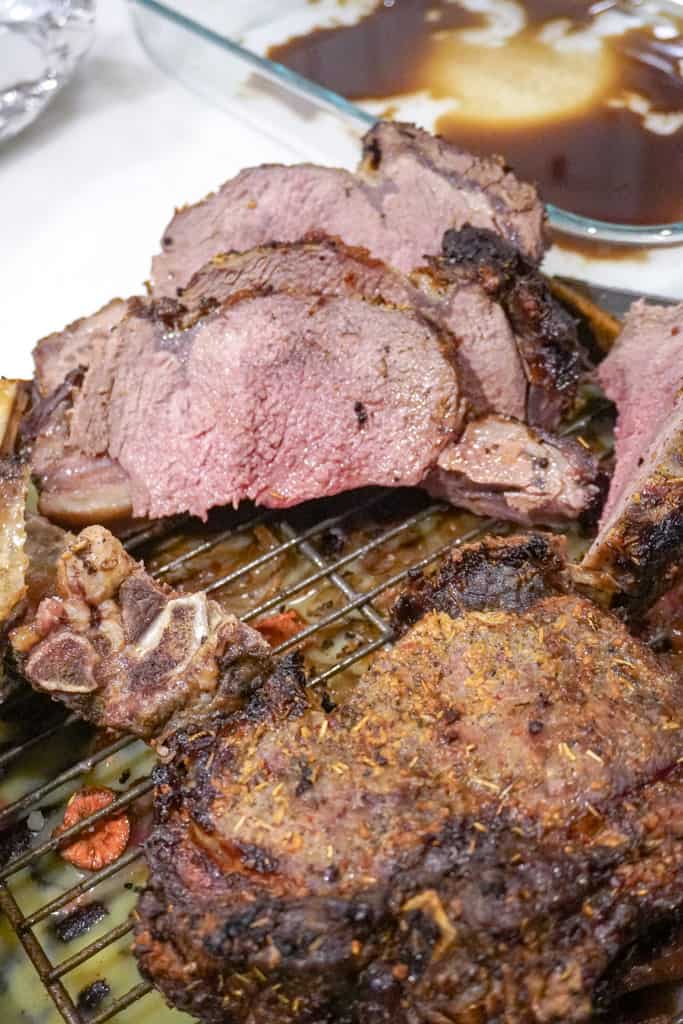
Easy Ribeye Roast
When it comes to holiday meals, there’s nothing like serving a mouthwatering slice of perfectly roasted ribeye. What I love most about this roast is how elegant it looks, even though the prep is incredibly simple.
With just a few ingredients like butter, herbs, and garlic, you’re basically letting the oven do all the work. Roasting it low and slow gives you that restaurant-quality beef without all the fuss. Then it’s ready to carve and serve to your guests.
This is the perfect dish for Christmas or any special occasion when you want to impress without spending hours in the kitchen. Trust me, your guests will rave about every juicy, tender bite!
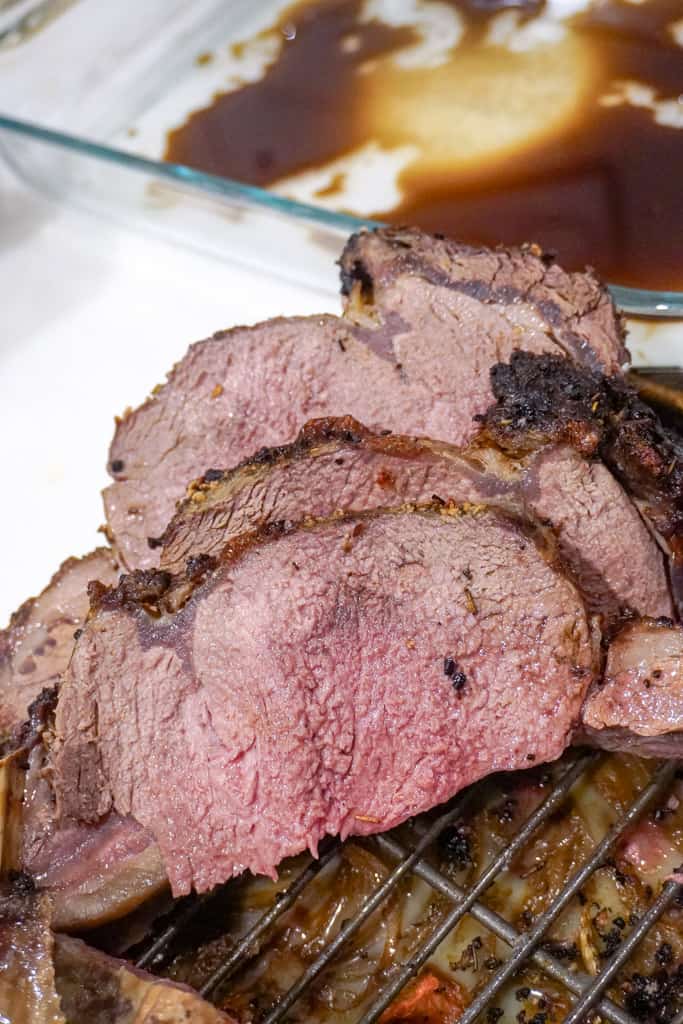
What is a Ribeye Roast?
A ribeye roast comes from the rib section of the cow, known for its rich marbling that makes it tender and full of flavor. The "eye" in ribeye refers to the eye-shaped portion of the cut, which contributes to its reputation as one of the most flavorful cuts of beef.
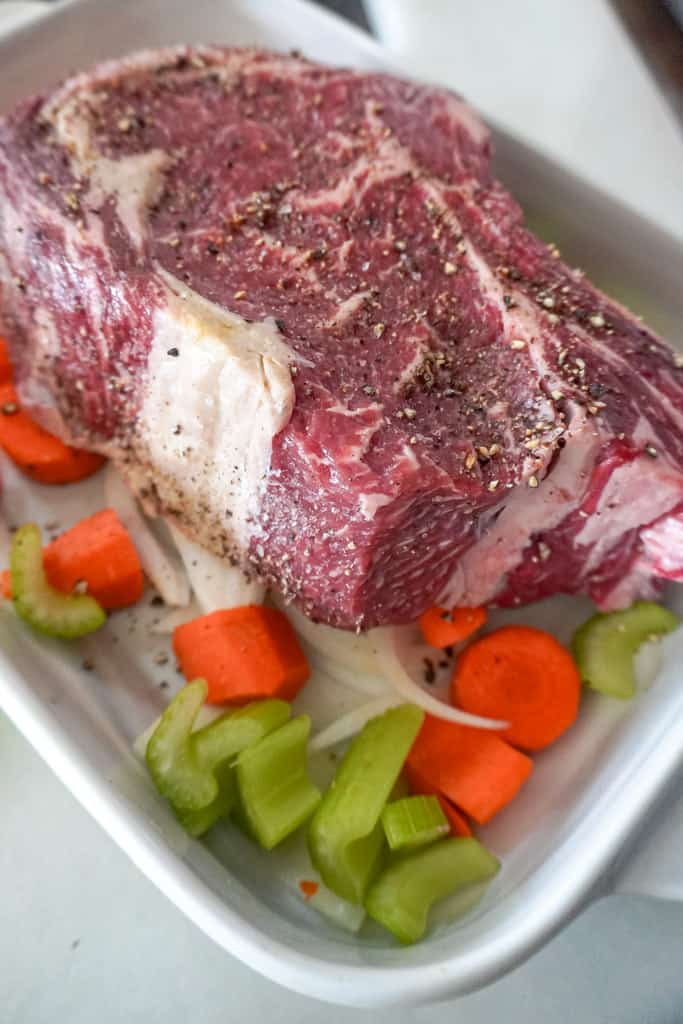
Is a ribeye roast the same as prime rib?
Ribeye roast and prime rib come from the same part of the cow, but prime rib is typically bone-in, while ribeye roast can be boneless or bone-in, like in this recipe. "Prime" refers to the USDA grading system, so a ribeye roast can be prime grade, even if it’s not called prime rib.
The terms are often used interchangeably, but my recipe specifically calls for a bone-in ribeye roast.
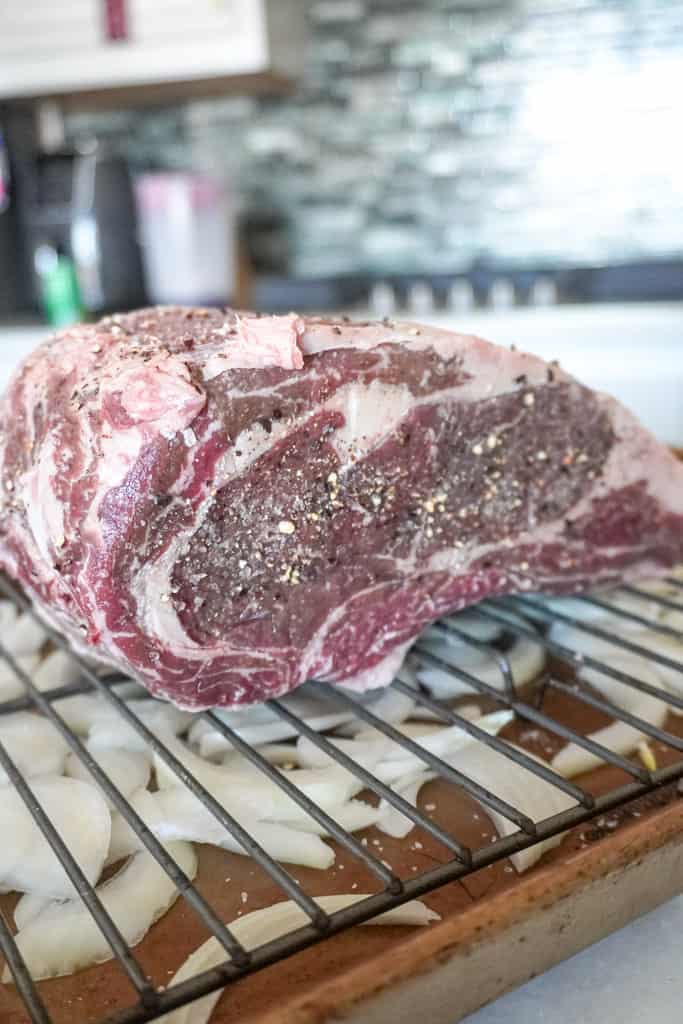
Ingredients
- Bone-in ribeye roast: The bone adds extra flavor and helps keep the meat juicy as it roasts, making for a more tender and flavorful result.
- Garlic: Freshly minced garlic infuses the roast with a bold, savory depth, complementing the herbs and enhancing the overall richness.
- Butter: Softened butter helps create a rich, golden crust on the roast while keeping the meat moist and flavorful during cooking.
- Olive oil: A touch of olive oil ensures even browning and prevents the butter from burning during the initial high-heat sear.
- Herbs: Rosemary and thyme add an aromatic, earthy flavor that pairs perfectly with beef. The choice between fresh or dried gives you flexibility.
- Seasoning: A generous coating of salt and pepper helps develop the crust and enhances the natural flavors of the roast, making every slice mouthwatering.
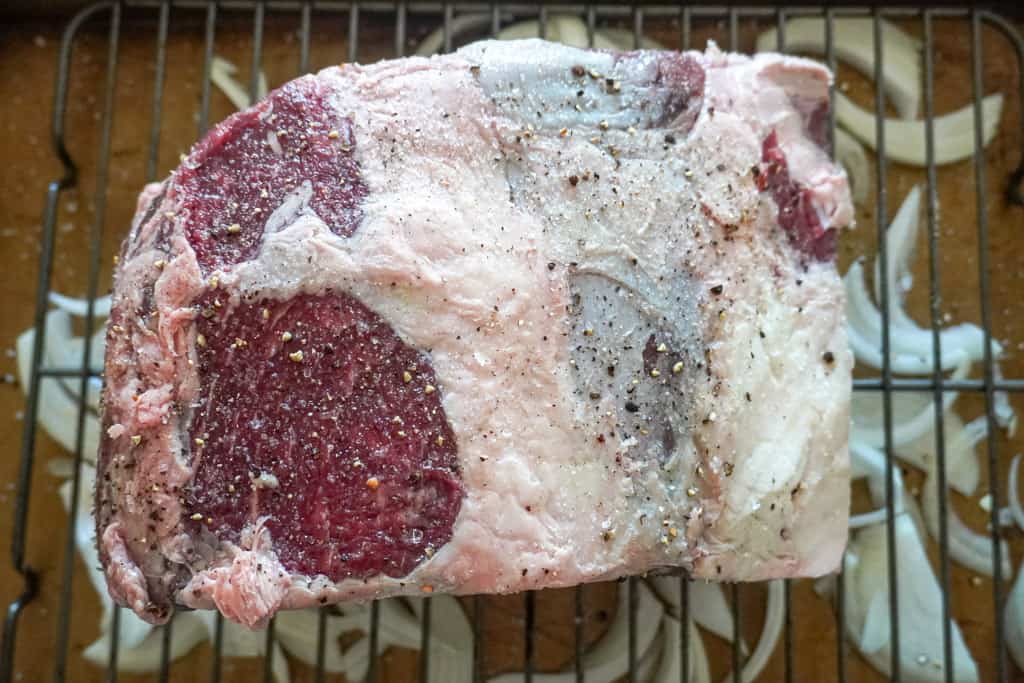
How to Cook a Ribeye Roast
See recipe card for ingredient quantities and full instructions.
I begin by taking the ribeye roast out of the refrigerator about an hour before cooking so it can come to room temperature. Then I preheat my oven to 450°F (230°C).
I pat the ribeye dry with paper towels. Then I place the butter and olive oil into a bowl and add the minced garlic, rosemary, and thyme, mixing until combined.
I rub the butter and olive oil mixture all over the roast. Then, I generously season the roast with salt and pepper. Be sure to coat the entire roast evenly.
Then I place the roast, bone-side down, on a rack in a baking dish. You can also use a roasting pan. Insert a meat thermometer into the roast's thickest part, ensuring it doesn't touch the bone.
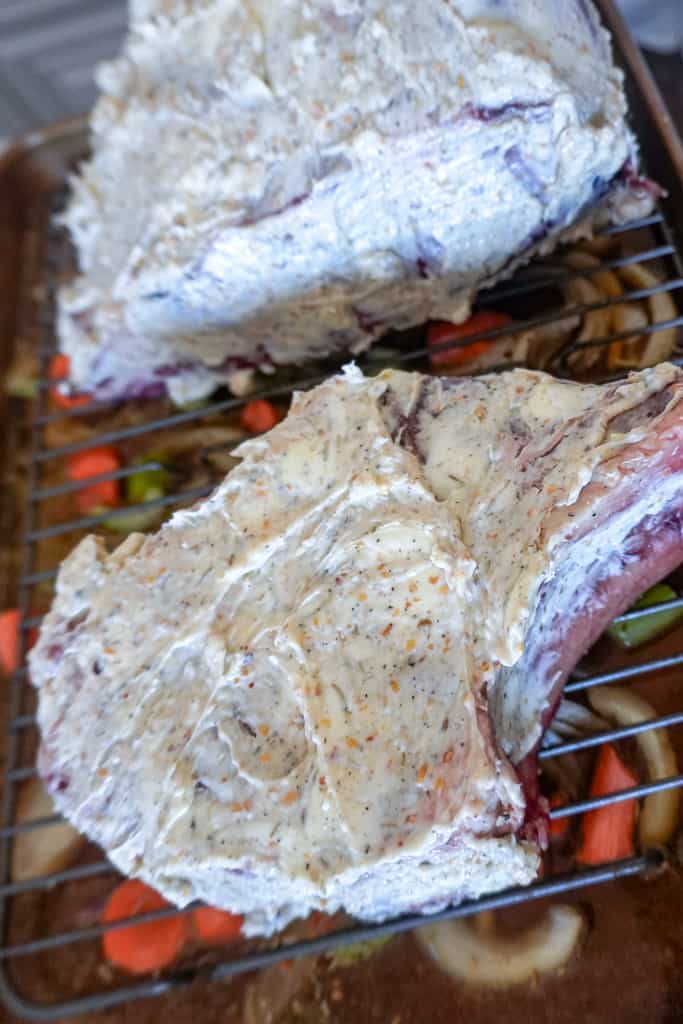
I put the roast in the preheated oven. Allow it to sear in the oven for 20 minutes at 450°F (230°C) to get a nice crust on the outside. Then, I reduce the oven temperature to 325°F (160°C).
At this point, continue roasting until the internal temperature reaches your desired level of doneness. Once the roast reaches your preferred temperature, take it out of the oven and tent it loosely with foil.
Let it rest for about 15-20 minutes. This resting period allows the juices to redistribute, resulting in a juicier roast when sliced.
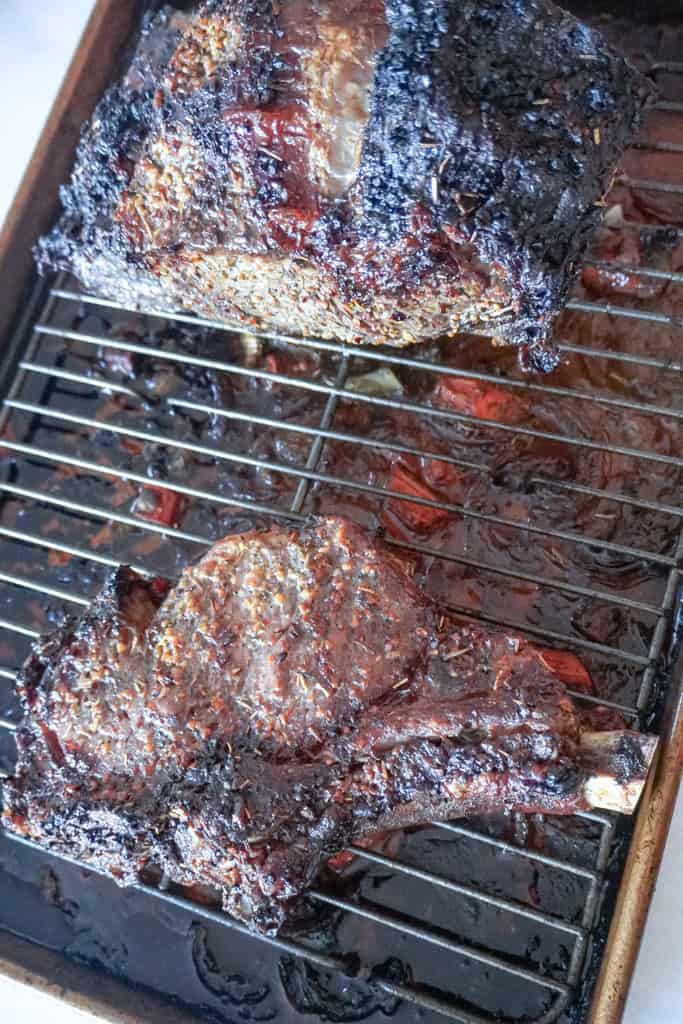
After resting, I slice the ribeye roast against the grain to the desired thickness. Serve and finally, enjoy!
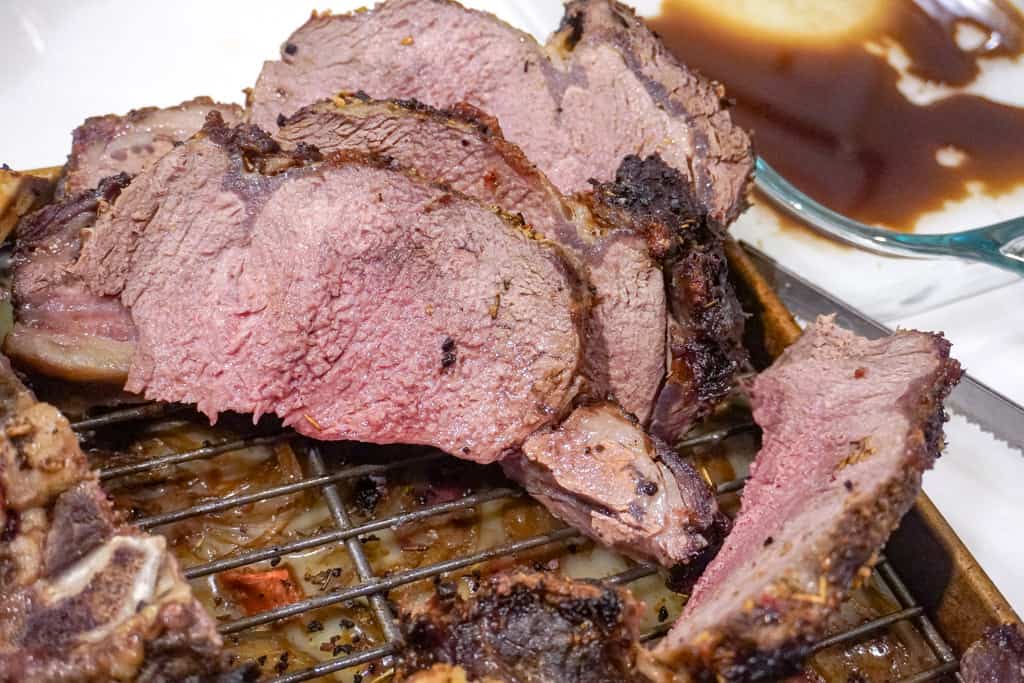
What Temperature to Cook Ribeye Roast To
- Rare: Aim for an internal temperature of 120-125°F (49-52°C).
- Medium-rare: Aim for 130-135°F (54-57°C).
- Medium: Aim for 140-145°F (60-63°C).
Remember, these temperatures will rise a few degrees after you remove the roast from the oven due to carry-over cooking. So take it out 4-5 degrees before it reaches your desired internal temperature.
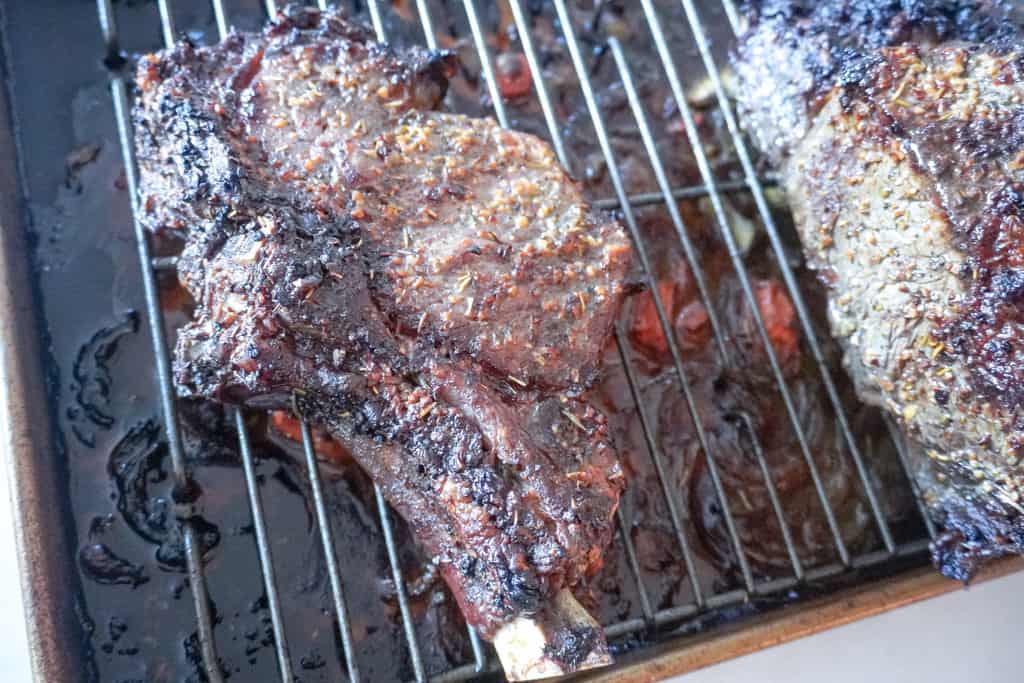
Pro Tips
- Focus on temperature, not time. Using a meat thermometer is the best way to ensure your ribeye roast reaches the perfect doneness, as cooking times can vary.
- Let it rest. Allow the roast to rest for at least 15 minutes after cooking to lock in the juices. Slicing too soon will result in a dry roast.
- Slice against the grain. For tender, juicy slices, always cut the meat against the grain.
- Flavorful au jus. Add roughly chopped vegetables to the bottom of the roasting pan to absorb the drippings, then blend with stock for a delicious au jus or gravy.
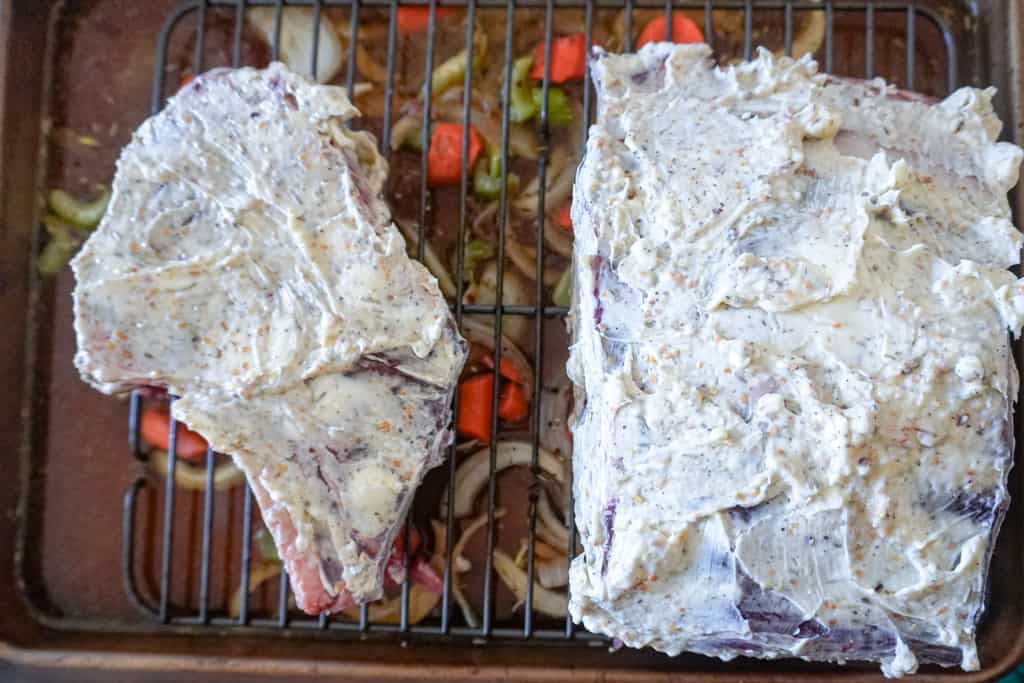
Storage
Once the beef ribeye roast has cooled to room temperature wrap it in foil or store it in an airtight container. Keep it in the fridge for up to 4 days.
Freeze: Alternatively, freeze it for up to 3 months. Thaw it overnight in the refrigerator.
Reheat: For the best results, reheat in the oven at 350°F for about 15-20 minutes. Just note that reheating the meat will increase the internal temperature, ensuring the beef roast is medium well to well done.
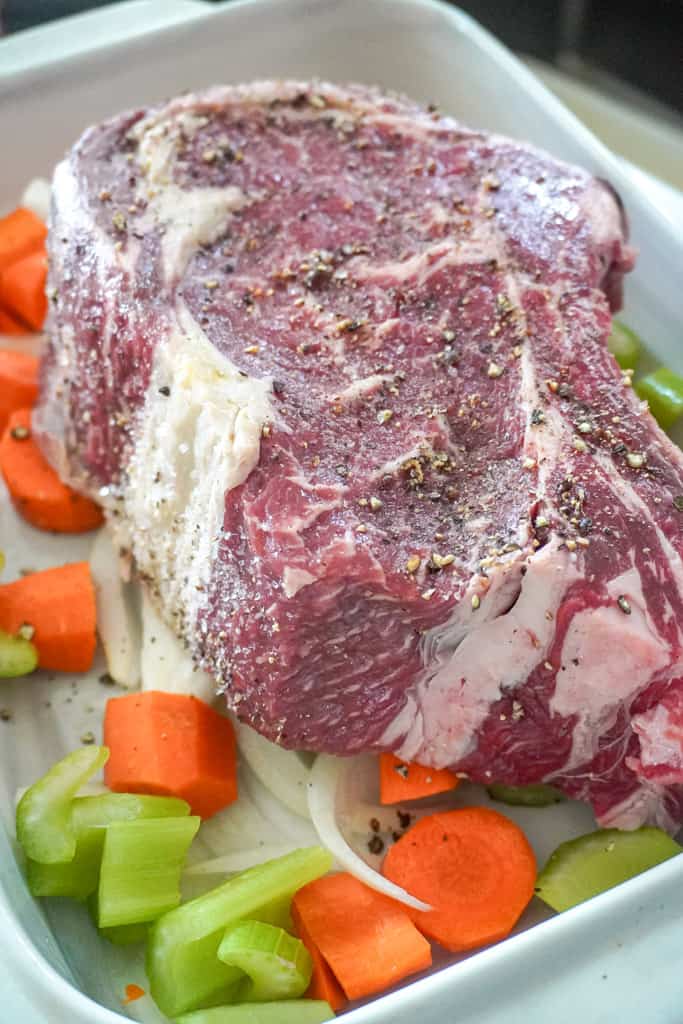
FAQ
How many minutes per pound to cook ribeye roast?
The cooking time for prime ribeye roast depends on the weight. For a medium roast, the general rule is to cook for about 20-25 minutes per pound after searing.
Is ribeye roast tough or tender?
It is an extremely tender cut of beef because it has a lot of marbling (fat).
Should I use a boneless or bone-in ribeye roast for this recipe?
For this recipe, I recommend bone-in because the bone adds extra flavor and helps keep the meat juicy. However, you can use a boneless ribeye roast if preferred; just adjust the cooking time slightly as it may cook faster.
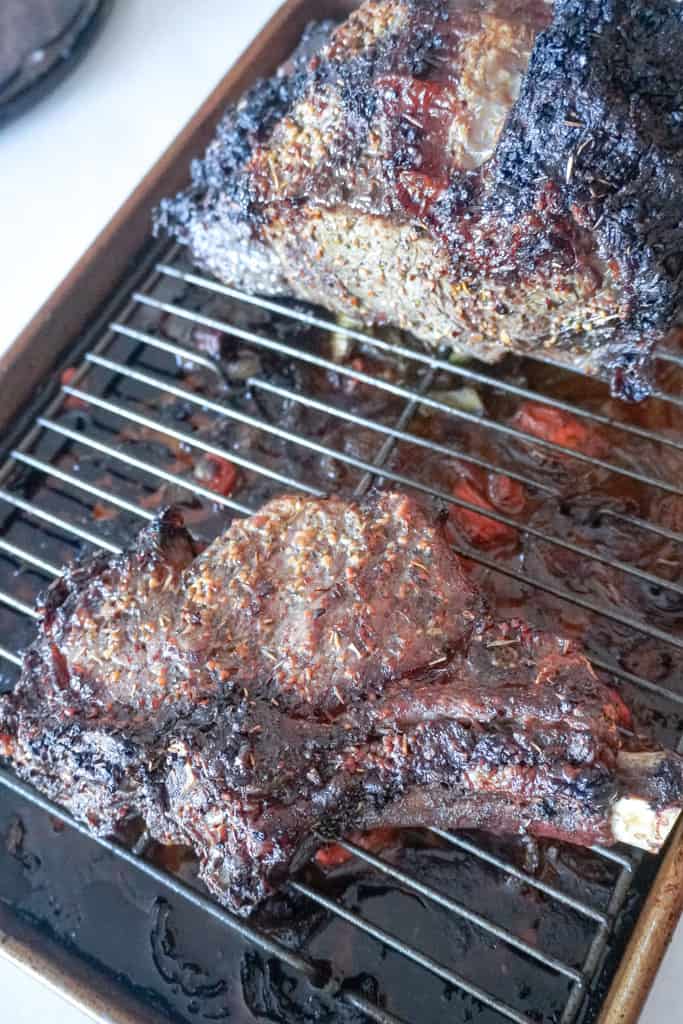
More Beef Recipes
Looking for other recipes like this? Try these:
What to Serve with this Dish
These are my favorite dishes to serve with Ribeye Roast:
After you try this Ribeye Roast recipe, I'd love to hear your thoughts. Comment below and follow me on Facebook, Instagram, Pinterest, and YouTube for more delicious recipes!
📖 Recipe
Ingredients
- 1 Bone-in ribeye roast about 4-6 pounds
- 2-3 cloves Garlic minced
- 4 tablespoons Butter room temperature unsalted
- 2 tablespoons Olive oil
- 2 tablespoons Fresh rosemary chopped, or 1 tablespoon dried rosemary
- 2 tablespoons Fresh thyme chopped, or 1 tablespoon dried thyme
- 3 tablespoons Salt more or less to taste
- 2 tablespoons Black pepper more or less to taste
Instructions
- Prepare the Roast: Take the ribeye roast out of the refrigerator about an hour before cooking to bring it to room temperature. Preheat your oven to 450°F (230°C).
- Season the Roast: Pat the ribeye roast dry with paper towels. Place the butter and olive oil into a bowl then add the minced garlic, rosemary, and thyme into the bowl and mix until combined.
- Rub the butter and olive oil mixture all over the roast. Then, generously season the roast with salt, pepper. Be sure to cover all sides.
- Place the roast, bone-side down, in a roasting pan or on a rack in a baking dish. Insert a meat thermometer into the thickest part of the roast, making sure it doesn't touch the bone.
- Put the roast in the preheated oven. Allow it to sear in the oven for 20 minutes at 450°F (230°C) to get a nice crust on the outside. Then, reduce the oven temperature to 325°F (160°C). Continue roasting until the internal temperature reaches your desired level of doneness:
- - For rare, aim for an internal temperature of 120-125°F (49-52°C).
- - For medium-rare, aim for 130-135°F (54-57°C).
- - For medium, aim for 140-145°F (60-63°C).
- - Remember, these temperatures will rise a few degrees after you remove the roast from the oven due to carry-over cooking.
- Allow the roast to rest: Once the roast reaches your preferred temperature, take it out of the oven and tent it loosely with foil. Let it rest for about 15-20 minutes. This resting period allows the juices to redistribute, resulting in a juicier roast when sliced.
- Serving: After resting, slice the ribeye roast against the grain into desired thickness, serve and enjoy!

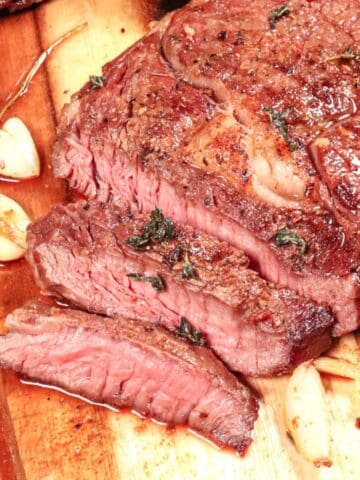
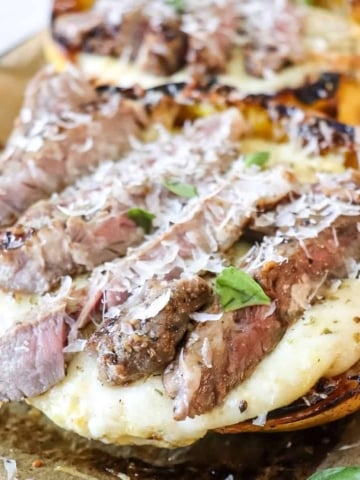

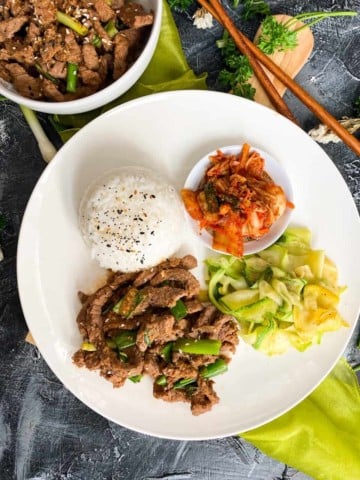
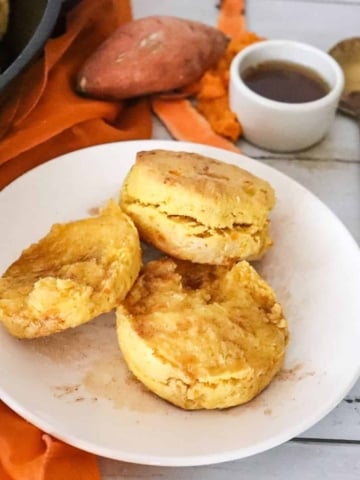
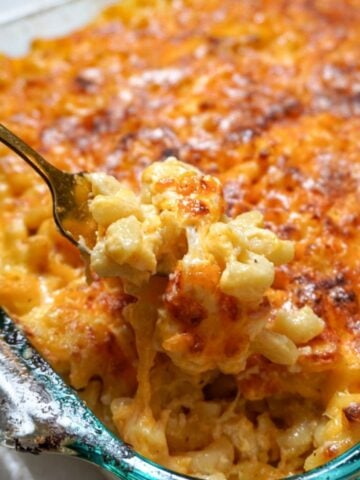
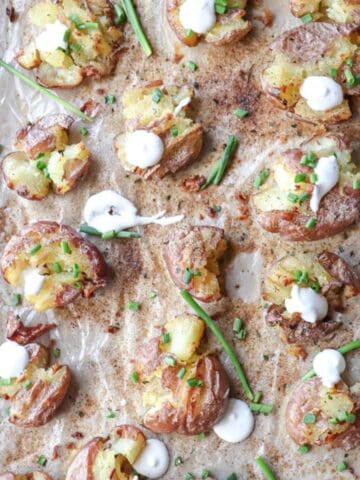
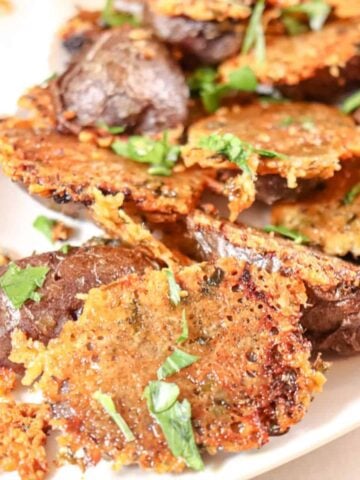
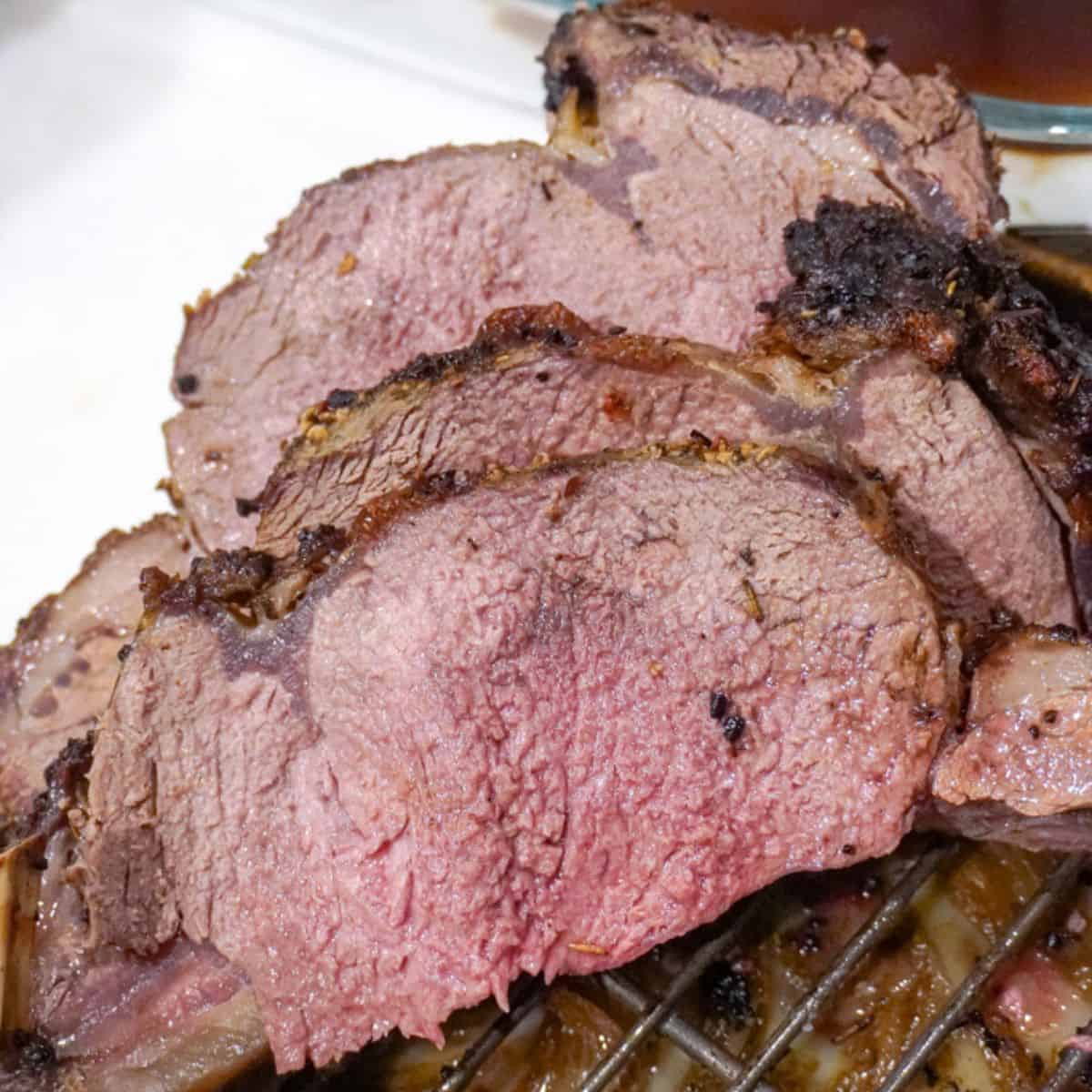







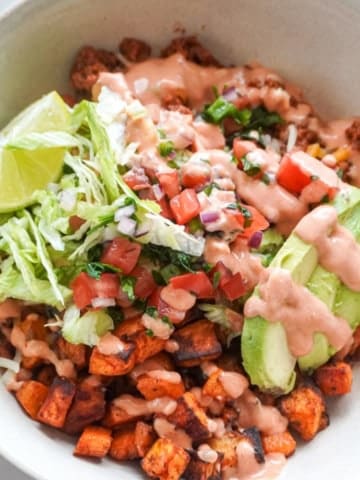
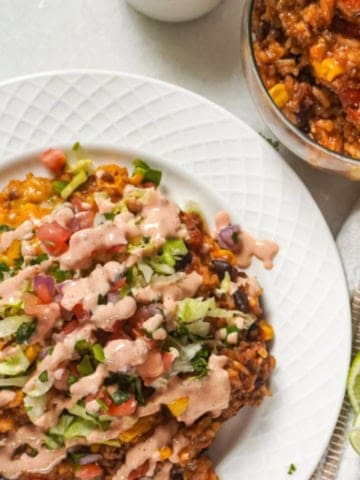
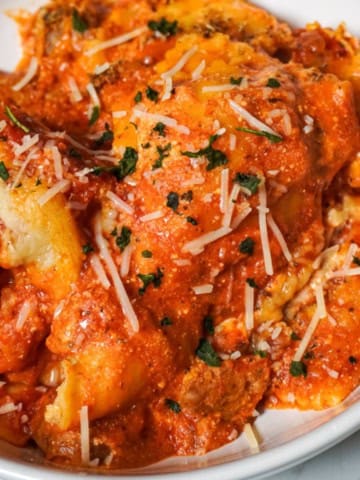
Raymond Klouda says
Good Stuff. Merry Christmas
Tamara J. says
Merry Christmas!
Misha says
I made this ribeye roast for Thanksgiving, and the fam loved it so much, that it’s already on the Christmas menu! The tip about focusing on temperature, not time, made ALLLL the difference. Thank you!!
Tamara J. says
I'm so happy you guys enjoy it as much as we do! Happy Holiday's!